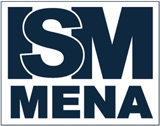Define Strategic Objectives for Firm-Level Support
Firm-level development begins with clarifying the objectives of the support program. These may include enhancing competitiveness, accelerating growth, improving productivity, facilitating market access, or aligning private sector performance with national development goals. Strategic objectives are defined in coordination with public agencies, sector leaders, or development partners to ensure coherence with broader economic priorities.
New Business Support
Business feasibility assessments and business plans are only developed as part of structured startup support programs. These tools are used to validate the business concept, identify market opportunities, and assess financial and operational viability. The business plan is not a theoretical document but an integrated component of real implementation.
Business Development Plan
This pathway is designed to support investors engaged in early-stage ventures within structured startup programs. It focuses on validating business ideas, navigating regulatory requirements, and designing robust business models and organizational structures.
Support extends to operations and process design, identification of key suppliers and sourcing strategies, customer segmentation, and market entry planning. Additional components include site selection criteria and preparation, staff recruitment and training, and the development of basic business strategies.
The primary objective is to establish stable, functional, and operationally ready enterprises that can transition smoothly from startup to sustained early-stage performance.
Existing Business Support
Business Diagnostic
A business diagnostic is not simply about identifying operational weaknesses. It is a strategic tool for understanding what prevents a business from achieving its own vision. While most businesses share common objectives such as covering costs, generating profit, and satisfying investors their visions can differ significantly.
Some businesses seek stability within a safe market share. Others prioritize expansion into new markets, or growth in size, systems, or internal capabilities. A development plan must reflect these distinctions. What works for one business may not be appropriate for another.
A comprehensive diagnostic assesses internal and external factors influencing business performance. The process includes secondary research (reviewing enterprise data, sector trends, and benchmarks) and a structured assessment of operations, systems, and strategy. This ensures that development planning is realistic, relevant, and aligned with the business’s capacity, goals, and operating environment.
Business Development Plan
A business development plan serves as a structured roadmap that translates a company’s vision and objectives into focused, actionable steps. Developed based on the diagnostic, the plan identifies where to focus resources and efforts to achieve measurable results.
The plan defines short- and medium-term priorities, performance indicators, resource needs, and responsibilities. It is tailored, adaptive, and implementation-focused covering areas such as operational systems, financial management, customer engagement, digital transformation, workforce development, or market positioning. Rather than following a template, it supports the business in achieving its own vision, whether that means stabilization, improved efficiency, or preparation for expansion.
Technology Update or Upgrade
Assessment and implementation of relevant digital systems, ERP, CRM, or automation tools to improve efficiency, reduce human error, and increase scalability.
Organization Structure Development
Realignment of the organizational chart, delegation of authority, and clarification of executive roles to support accountability and performance.
Organization Capacity Building
Development of internal capabilities through training, systems integration, and performance support across functions.
Quality Management System Development and Implementation
Design and deployment of QMS frameworks (ISO-based or custom) to enhance consistency, customer satisfaction, and compliance.
Business Continuous Improvement
Adoption of structured approaches such as TQM, BPI, or BPR to drive process optimization and reduce inefficiencies.
Business Strategic Partnership
Identification and structuring of partnerships that enhance capacity, market access, innovation, or shared investment.
Business Expansion or Export
Planning and implementation support for entering new product lines, sectors, or regional/international markets.
Business Growth or Upscale
Strategic support for scaling operations, entering new stages of organizational maturity, or investing in leadership and infrastructure.
Business Franchise
Structuring franchise models, operations manuals, and replication systems to expand the business through franchise-based growth.
Business Merger or Acquisition
Advisory services and technical assistance for merger preparation, acquisition planning, due diligence, and post-merger integration
